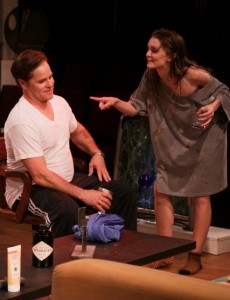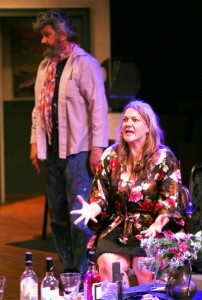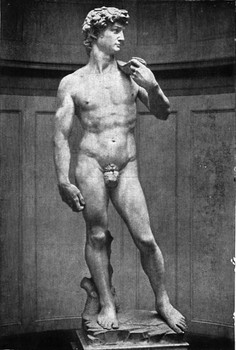DRUG-ADDLED FISH
Tell me what you eat, and
I will tell you what you are.
Anthelme Brillat-Savarin
I am very careful about the food I eat because I know that what is in it goes into me. I will not eat red meat because I was a huge fan of Elsie the Cow, Porky the Pig and Mary’s three little lambs. However, since I never had an aquarium or cuddled something aquatic, I have been relying on fish as a staple to my diet.
I am amazed to learn that the reason I feel so relaxed and at peace with the world after a salmon dinner is that the fish on our planet are all becoming junkies. We are dumping our medications into the landfill helter-skelter and our Prozac, Vicodin and Demerol are being transmitted from the fish in the sea into my bloodstream.
I find this excellent news. It has the potential to save me an immense amount of money when I am moved to escape my current reality. If I eat my perch and dine on cod I will be calm and collected, if a bit loopy, when disaster strikes. I will not panic…I will be properly tranquilized by my dinner.
There is more good news to come. Evidently, all that drug consumption has made our fishy friends sterile. The morning after pills we didn’t need and the birth control pills we discard are affecting the reproductive powers of our aquatic friends. This is bad for the food supply I admit and terrible information for the pharmaceutical companies. We no longer need rely on the pill or the morning-after remedies (some of which are disgustingly unpleasant) to take care of any repercussions from a night of pleasure. All we need do is eat a generous helping of plaice for dinner. (You can even deep-fry it and it will still fix you up). If you decide you would like to have a family, forget estrogen or in-vitrio fertilization. Eat meat.
Ah, how times have changed. Back in the uninformed early fifties, I had two exquisite Siamese Fighting Fish: Herbert and Tarrington. They were lovely to watch, swimming from one side of their little bowl to the other, munching on algae and sparking in the sun. But one day Herbert got into a snit and ate poor timid Tarrington. He digested him whole and didn’t even spit out the bones. Had he lived in this knowledgeable century of ours, I would have scooped up some water for the nearest stream and cured his inappropriate behavior just like that.
Of course there are times when you do not want to dull your senses. You long to heighten your awareness of life around you. No need to waste hard-earned cash on speed, cocaine or ecstasy. Just run to the nearest fish grotto, pig out on sea bass and you are ready to party!
The only ones deprived of this safe avenue to contentment are vegetarians. They will have to rely on prescription medicines for their highs. The poor among them will reproduce like bunnies if they don’t give up sex entirely. It doesn’t seem fair does it? They have already given up so much that makes life delicious.
Fish, to taste right, must swim three times –
in water, in butter and in wine.
Polish Proverb










